Wash your hair, not your hair, choose shampoo for your skin type, do not apply hair masks to the roots and monitor the temperature of the water
Shampooing is one of the simplest and most routine tasks that many women perform almost daily. Each one does it the way it is convenient. Someone on the machine in the morning puts their head under the tap with water, someone washes their hair at night under the shower, and someone takes on the cleanliness of hair only once a week, but at the same time arranges a whole spa ritual. In fact, not only the appearance of the hair and the neatness of the hairstyle directly depends on how and with what we wash our heads. Correct shampooing normalizes the work of the sebaceous glands, removes excess oily hair and increases blood flow to the hair follicles. Yes, yes, if you wash your hair according to the rules, your hair will fall out less - without any strengthening masks and ampoules with nutrients.
Rule 1. Wash your hair as needed
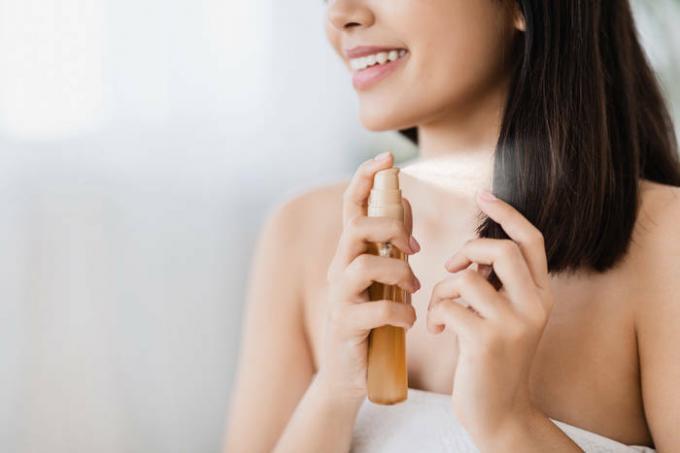
It is better to wash your hair often than to use dry shampoo all the time / istockphoto.com
Previously, it was believed that the head should be washed no more than twice a week. Allegedly, the less often you wash your hair, the less stimulated the work of the sebaceous glands, and the less the hair becomes dirty in the future. There was even an opinion that the hair can be "accustomed" to such a washing schedule. However, owners of oily hair will say from their own experience that this is not true.
Trichologists have proved that hair and even more so the scalp does not "retrain". Therefore, you can (and should!) Wash your head according to the degree of contamination. Moreover, postponing the washing procedure is worse than washing your hair every day. The scalp suffers from dust, dirt and greasy secretions at the roots of the hair much more than from the effects of shampoo. It is even worse if you replace washing your hair. dry shampoos and other methods of express cleaning. This can be done no more than once a week and only when there is no way to wash your hair.
Rule 2. Wash your hair, not your hair
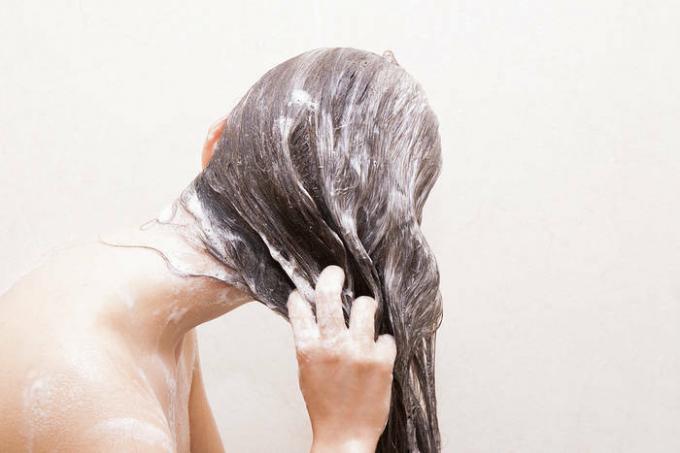
Wash your hair thoroughly and your hair will be cleansed with shampoo residues / istockphoto.com
The name of the procedure is its essence: when we wash our hair, it is the head that we cleanse. The choice of shampoo and the technique of its application directly depends on this. If your scalp is prone to excess oiliness, do not buy gentle shampoos for damaged hair. They will poorly cleanse the skin of sebaceous secretions, and the next day you will have to repeat the procedure again. Take a shampoo designed for your skin and apply it exclusively to the hair roots. This way you injure the hair itself less, especially if you have painted or bleached curls.
There is no need to worry about the cleanliness of the hair itself: in order to refresh it, there is enough shampoo residues that will pass along the length of the hair when washed off. An exception is if you use styling products. Hairsprays, foams and hair gels must be thoroughly removed with shampoo from each strand.
Rule 3. Do not tire your head in the bath
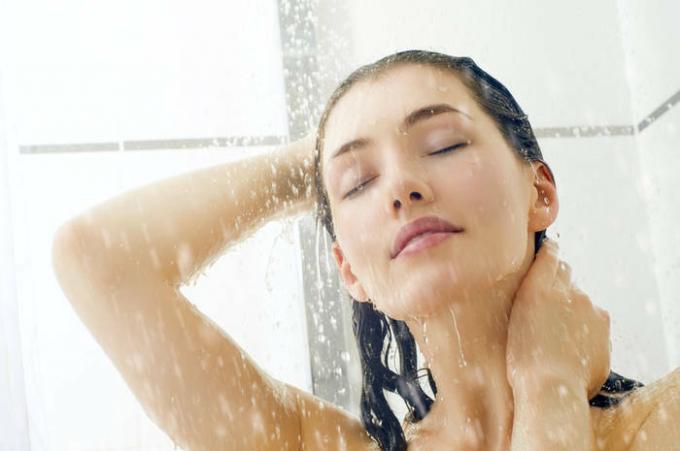
The water temperature for shampooing should be no higher than 40 degrees / istockphoto.com
Women with oily hair often try to "scrub" their hair with hot water. The logic here is simple: the higher the water temperature, the better the greasy secretion is washed out. In fact, everything happens exactly the opposite: hot water leaches out the hair and stimulates the intensive work of the sebaceous glands. Best of all, the head is washed out at a water temperature of no higher than 40 degrees, so focus on the sensations of the body. When washing, you should feel comfortable, not hot. Also remember to rinse your hair with cool water after washing. This life hack stimulates the flow of blood to the hair follicles, and also "closes" the steamed hair scales, making the strands smoother and shinier.
Special attention should be paid to the quality of the water with which you wash your hair. Tap water in Kiev and in the region is very hard, with a high iron content and often with chlorine residues. Washing your hair with this water is difficult, and moreover, minerals often settle on the scalp. Therefore, install a good cleaning filter at home or use boiled water for washing.
Rule 4. Apply shampoo correctly
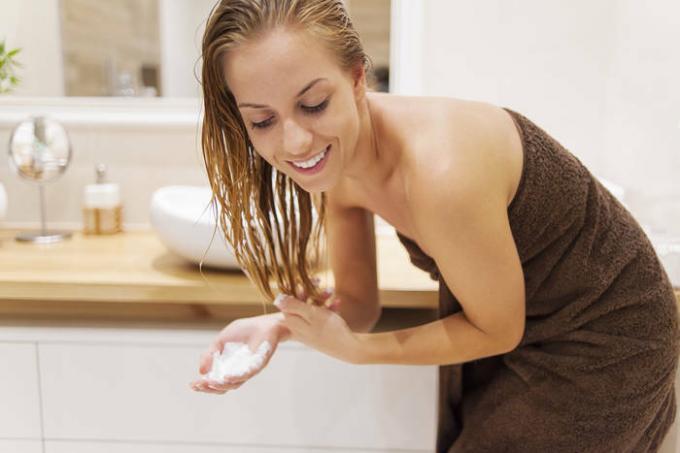
Before applying to the head, shampoo must be lather in the palm of your hand / istockphoto.com
Be sure to comb your hair before washing your hair. For owners of long hair, it is important to comb the curls to the very ends: on top with a massage brush, and below with a comb. Dampen your head with water and wait 3-5 minutes to completely wet your hair and scalp. Give up the habit of pouring shampoos and balms directly on your head. Firstly, this way you do not control the consumption of the detergent. Secondly, it is applied unevenly to the head, and unwashed areas may remain after washing.
Pour a serving of shampoo (5-10 ml) into the palm of your hand, mix with water and lather quickly. Spread the resulting mass evenly over the entire head. After that, beat the shampoo on the hair roots with your fingers for a few minutes. This can be done quite energetically. The main thing is not to injure the skin with your nails. Thus, you will not only rinse the hair roots, but also provide your scalp with an express massage. This habit stimulates blood circulation and, in the long term, strengthens the hair well.
Rule 5. Use additional funds
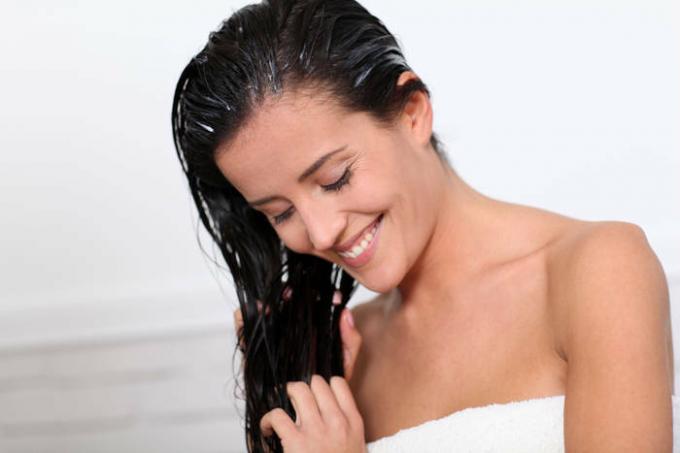
After washing, apply the balm to the length of the hair without affecting the roots / istockphoto.com
Many people consider balms and hair masks a waste of money. Often women complain that they do not notice any effect from their use. In fact, the secret is to apply these products correctly. Trichologists advise to dry hair slightly with a towel before using balms or conditioners so that the product does not drip off the strands along with water. Be sure to adhere to the time recommended by the manufacturer: if it says on the balm that you need to hold it for 5 minutes, in less time you really will not see any result. And do not apply such products to the roots: they are designed specifically for curls, which means they can harm the scalp.
Recently, stylists are increasingly recommending to their clients the so-called pre-shampoo - this is a product that is applied to the hair before shampooing. This is not done for advertising purposes. The purpose of the pre-shampoo is to protect your hair from the aggressive effects of detergents. As a rule, the product is applied to the hair lengthwise without affecting the roots, kept for 5-10 minutes and washed off with water. After that, it is enough to rinse the head with shampoo once - this is especially convenient for those who are used to applying and washing off the shampoo twice.
Rule 6. Exfoliate your scalp regularly
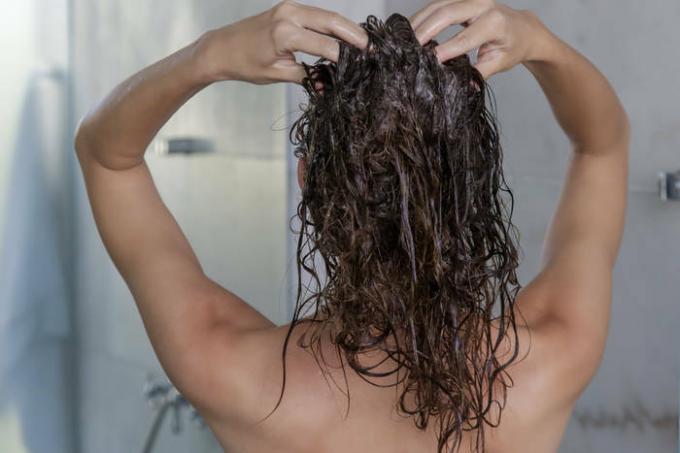
Exfoliate your scalp with regular massage / istockphoto.com
No amount of washing will properly remove dead cells from the scalp. But it is they who clog the pores and block the flow of oxygen to the hair follicles. To gently remove this dead layer, do not forget to exfoliate or scrub the stratum corneum. How often you do exfoliation can be determined by how often you wash your hair. For oily scalp (daily washing), peeling once a week is indicated. Normal skin (shampooing every three days) requires peeling every two weeks. But dry skin (wash your hair every five to seven days) can be cleaned once a month.
Peeling has a very beneficial effect on the condition of the hair, promotes its growth and reduces the tendency to hair loss. But you just need to do it according to the rules. Use special products for the scalp - body scrubs can dry out the roots and injure the hair shafts. During peeling, be sure to massage your head for at least 10 minutes - this will enhance the penetration of cleaning agents into the epidermis. And after the procedure, do not forget about a balm or mask: they are needed to prevent the curls from drying out.
You will also be interested in reading:
How not to blow-dry your hair: 5 mistakes that harm
Non-obvious reasons why hair gets dirty quickly
How to quickly and effectively restore hair after winter

